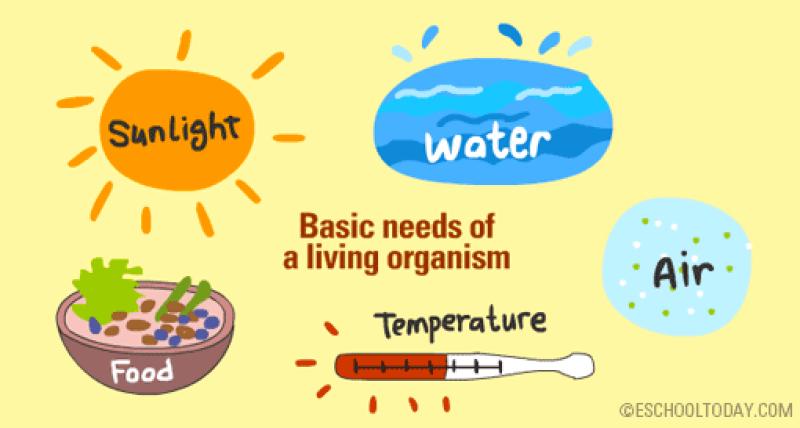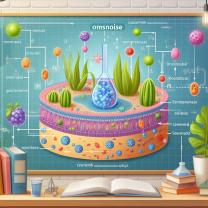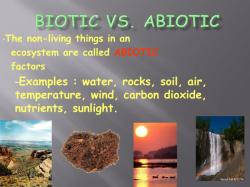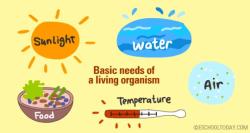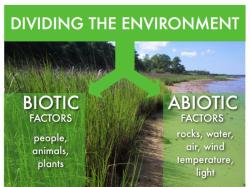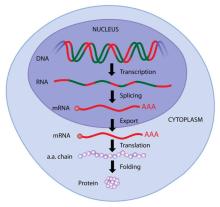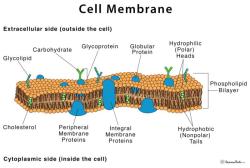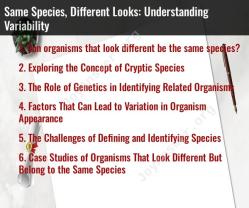What do organisms need in their environment?
Organisms have specific environmental needs that are essential for their survival and well-being. The specific requirements can vary among different species, but there are common factors that contribute to the survival of most organisms. Here are some key environmental needs for organisms:
Water:
- Water is a fundamental requirement for life. Most organisms, from microorganisms to plants and animals, need water for various physiological processes, including hydration, nutrient transport, and metabolic reactions.
Nutrients:
- Organisms require essential nutrients, such as carbohydrates, proteins, fats, vitamins, and minerals, for growth, development, and maintenance of their bodily functions. The specific nutrient requirements can vary among different species.
Oxygen:
- Many organisms, especially aerobic organisms, depend on oxygen for cellular respiration. Oxygen is used in the process of breaking down nutrients to produce energy. Some organisms, like plants, produce oxygen as a byproduct of photosynthesis.
Temperature:
- Organisms have optimal temperature ranges for their metabolic activities. Temperature affects enzyme function, cellular processes, and overall metabolism. Different species have varying temperature tolerances.
Light:
- Light is crucial for photosynthetic organisms, such as plants and certain bacteria, to produce energy through photosynthesis. Light also serves as a cue for various behaviors and biological rhythms in many organisms.
pH Level:
- The pH level of the environment influences biochemical reactions within organisms. Different species have specific pH ranges that are suitable for their survival and metabolic processes.
Habitat and Shelter:
- Organisms need a suitable habitat or shelter that provides the necessary conditions for survival. This includes protection from predators, access to food sources, and appropriate living conditions.
Reproductive Opportunities:
- For the continuation of their species, organisms need opportunities for reproduction. This includes access to mates, suitable breeding sites, and favorable conditions for raising offspring.
Social Interactions:
- Many species, especially social animals, require social interactions for various reasons such as mating, protection, and cooperative behaviors. Social structures contribute to the well-being and survival of certain organisms.
Adaptations to Environmental Conditions:
- Organisms often develop adaptations that allow them to thrive in specific environmental conditions. These adaptations may include physical features, behaviors, or physiological processes that enhance survival.
Clean Environment:
- A clean environment, free from pollutants and toxins, is crucial for the health and well-being of organisms. Pollution and environmental degradation can negatively impact the survival of many species.
It's important to note that different species have evolved to thrive in diverse environments, and their specific environmental needs can vary significantly. Additionally, ecosystems are dynamic, and changes in environmental conditions can affect the balance and survival of organisms within those ecosystems.
Essential Environmental Requirements for Life: A Balancing Act
Organisms have a fascinating relationship with their surroundings, constantly interacting to meet their needs and secure survival. Let's delve into the key environmental elements crucial for life and how organisms navigate this essential dance:
1. Essential environmental requirements:
- Energy: Every organism needs energy to fuel its functions, be it from sunlight (photosynthesis), food (chemosynthesis), or other sources.
- Water: Water is fundamental for most life processes, acting as a solvent, transport medium, and regulator of body temperature.
- Air (or gas exchange): Organisms need to exchange gases, like oxygen and carbon dioxide, with their environment for respiration and cellular processes.
- Nutrients: Essential elements like nitrogen, phosphorus, and potassium are needed for building and maintaining organic molecules and cellular structures.
- Habitat: A physical space providing shelter, protection from predators, and access to other resources like food and water.
- Optimal temperature range: Each organism has a temperature range within which it can thrive, beyond which metabolic processes become hindered or cease.
- Other factors: Light, pH levels, salinity, and even specific minerals can be crucial for certain organisms depending on their unique adaptations.
2. Interaction and Adaptation:
Organisms have evolved diverse strategies to interact with their environment and extract or acquire what they need:
- Predation and herbivory: Some organisms directly consume others for energy and nutrients.
- Mutualism and symbiosis: Cooperative relationships benefit both organisms involved, like bees pollinating flowers for mutual benefit.
- Decomposition and detritivory: Breaking down dead organisms releases nutrients back into the ecosystem for other organisms to utilize.
- Migration and resource tracking: Many organisms move seasonally or geographically to follow resources and optimal environmental conditions.
- Physiological adaptations: Some organisms possess specialized organ systems or adaptations to efficiently utilize available resources, like a camel's water storage capability or a cactus's water conservation strategies.
3. Specific Resource Needs:
Different organisms have varied resource requirements:
- Autotrophs: Like plants, they produce their own energy through photosynthesis, needing primarily sunlight, water, and nutrients.
- Heterotrophs: Dependent on external sources of organic energy, consuming other organisms or their byproducts.
- Carnivores: Feed primarily on animal flesh.
- Herbivores: Consume plant matter.
- Omnivores: Consume both plant and animal matter.
- Extremophiles: Thrive in harsh environments like high temperatures, acidic conditions, or deep oceanic pressures.
4. Resource Availability and Distribution:
The availability of resources directly impacts organisms' distribution:
- Carrying capacity: Each environment can support a limited number of individuals based on resource availability.
- Competition: Limited resources lead to competition between organisms for survival, driving adaptations and niche specialization.
- Habitat suitability: Specific environmental conditions determine which organisms can thrive in a particular location.
- Resource fluctuations: Seasonal changes or environmental disturbances can impact resource availability and lead to population shifts or fluctuations.
5. Deprivation of Essential Elements:
Lack of essential environmental elements can have dire consequences for organisms:
- Starvation: Insufficient energy intake leads to weakness, organ failure, and eventually death.
- Dehydration: Water loss disrupts vital functions and can lead to organ failure and death.
- Suffocation: Lack of oxygen hinders respiration and causes cellular damage, leading to death.
- Nutrient deficiencies: Lack of essential elements can impair growth, reproduction, and immune function.
- Habitat loss and climate change: These disrupt established ecosystems and resource availability, impacting entire populations and driving extinction in some cases.
Understanding the complex interplay between organisms and their environment is crucial for appreciating the delicate balance of life on Earth. From the smallest microbe to the tallest trees, all organisms exist in a constant dialogue with their surroundings, relying on essential elements and adapting to survive and thrive within the constraints of their habitat. Protecting these elements and maintaining balanced ecosystems is key to ensuring the continued diversity and richness of life on our planet.
